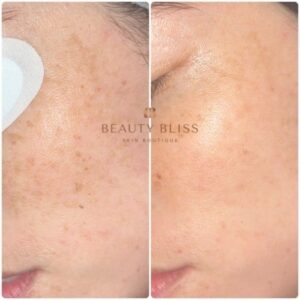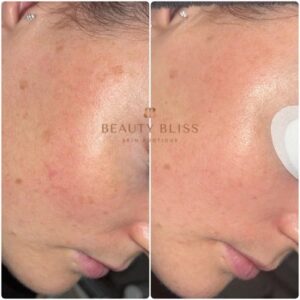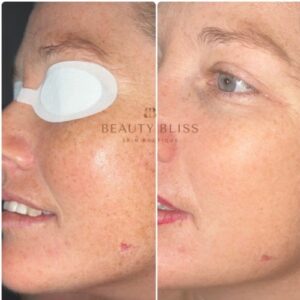Understanding and Treating Pigmentation
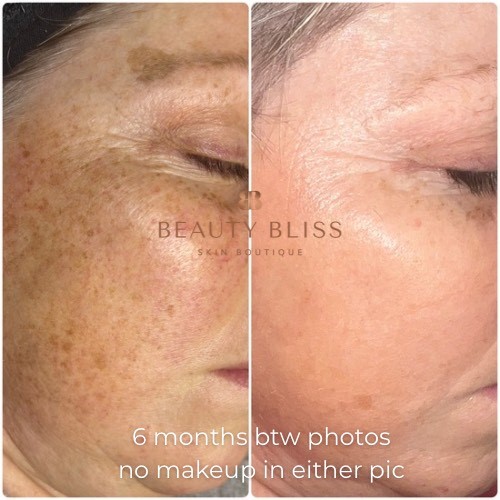
Pigmentation Treatment
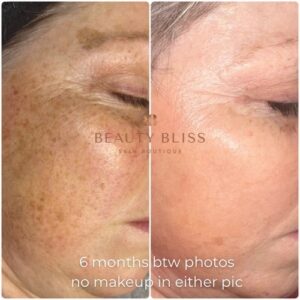
Understanding and Treating Pigmentation at Beauty Bliss Skin Boutique
Pigmentation is one of the most common — and most frustrating — skin concerns we see at Beauty Bliss Skin Boutique. Whether it appears as sunspots, melasma, acne scarring, or uneven skin tone, pigmentation can make the skin appear older, duller, and uneven, even if the texture is smooth. In Melbourne, where we experience a unique mix of harsh UV exposure, cooler months, and inconsistent cloud cover, pigmentation can easily flare up — and stay stubborn if not treated correctly. Add in lifestyle stress, hormonal fluctuations, and inflammation from past breakouts or sensitivity, and suddenly pigmentation becomes not just a cosmetic concern, but a long-term skin challenge. But the good news is this: pigmentation is treatable — and at Beauty Bliss, we use a layered, scientific approach combining professional treatments, Circadia medical-grade skincare, and lifestyle support to deliver real, lasting results.
So what exactly is pigmentation?
In simple terms, pigmentation occurs when your skin produces excess melanin, the pigment that gives your skin its colour. This process is called melanogenesis, and it’s triggered by multiple factors — primarily sun exposure, heat, inflammation, and hormones. For example, when UV rays penetrate the skin, they signal melanocytes (your pigment-producing cells) to protect the skin by releasing melanin. This shows up as tanning, freckles, or sunspots. In cases of trauma or inflammation — such as acne or eczema — the skin can respond with post-inflammatory hyperpigmentation (PIH), where dark spots linger long after the breakout heals. Hormonal pigmentation, like melasma, is another layer entirely — driven by internal factors like pregnancy, oral contraceptives, or hormonal imbalance — and worsened by even small amounts of UV or infrared heat. All of these pigmentation types require a multifaceted, consistent approach to truly fade.
The first step in any pigmentation treatment journey at Beauty Bliss
A thorough consultation, where we assess the type, depth, and triggers of your pigmentation. From there, we build a personalised treatment plan that typically includes clinical treatments, Circadia skincare, and sun protection education. We explain clearly what’s treatable (and to what degree), and what maintenance will look like — because when it comes to pigmentation, there is no one-size-fits-all fix, and treatment is a marathon, not a sprint. If you would like to book in a skin consultation and learn what we can do to help you with pigmentation concerns book in for one of our skin consultations.
Our most effective clinical treatment for pigmentation
is Q-Switch Laser Rejuvenation, a non-ablative laser that breaks apart melanin within the dermis using ultra-short pulses of energy. Over a series of sessions, the shattered pigment is absorbed and cleared by your lymphatic system, revealing a brighter, more even complexion. What makes this treatment unique is that it also stimulates collagen, helping improve skin texture and clarity at the same time. This laser is particularly effective on sunspots, freckles, and PIH — and safe for most skin tones. Our Larimedical biomimetic peels are also ideal for targeting pigment and can be administered in a treatment course or as part of a protocol.
For clients with melasma or heat-reactive pigmentation
We use more gentle, progressive methods to avoid rebound pigmentation. Our Qswitch toning laser is ideal for working with melasma. This is paired with post-treatment homecare using brightening and calming actives to strengthen the skin barrier while fading dark spots.
We also see incredible results using Circadia Enzyme Therapy + Oxygen Rx for clients with inflammatory pigmentation or redness-based pigment issues. The enzymes exfoliate gently without acids, while the oxygen infusion soothes inflammation and boosts skin function — critical for clients whose pigmentation is worsened by skin stress or reactive treatments. This is an ideal treatment for those with active breakouts and pigmentation at the same time — something we see often in clients who are post-pill, perimenopausal, or recovering from maskne.
How can you prevent it?
Pigmentation can be prevented by the daily application of products that inhibit tyrosinase, an enzyme that controls the production of melanin. It is also important to cover up in the sun and wear SPF every day.
Treatments we offer for pigmentation
- Etherea MX Qswitch laser toning and targeted treatments
- Larimedical biomimetic peels
- Targeted skincare
- Exceed medical needling
You can book in for this treatment here
